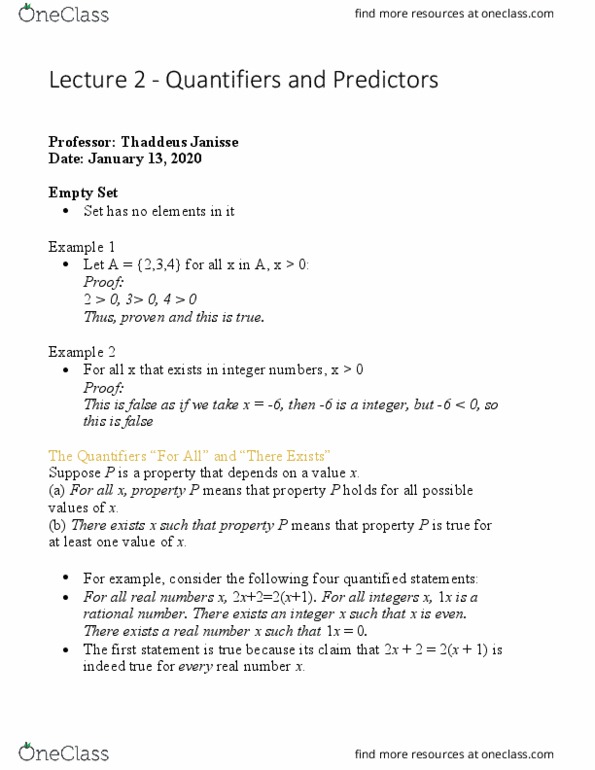MAT137Y1 Lecture Notes - Lecture 3: Distributive Property
MAT137Y1 verified notes
3/39View all
Document Summary
The lower limit of summation does not have to be 1; it can be any integer. If ak is a function of k, and m and n are non-negative integers with m n, then. The k = m below the sigma shows where we should begin the sum, and it also specifies that the index, or stepping variable, for the sum is k. Set i = n and write down ri. Add 1 to the index i and add ri to the current sum. If ri is equal to m then stop, otherwise go to step 2 and repeat. If ak and bk are functions defined for nonnegative integers k, and c is any real number, then: General version of the distributive property c(x : = cx + cy. General version of the associative and commutative properties of addition. Given any function a k defined for nonnegative integers k, and given any integers m, n, and p such that.




